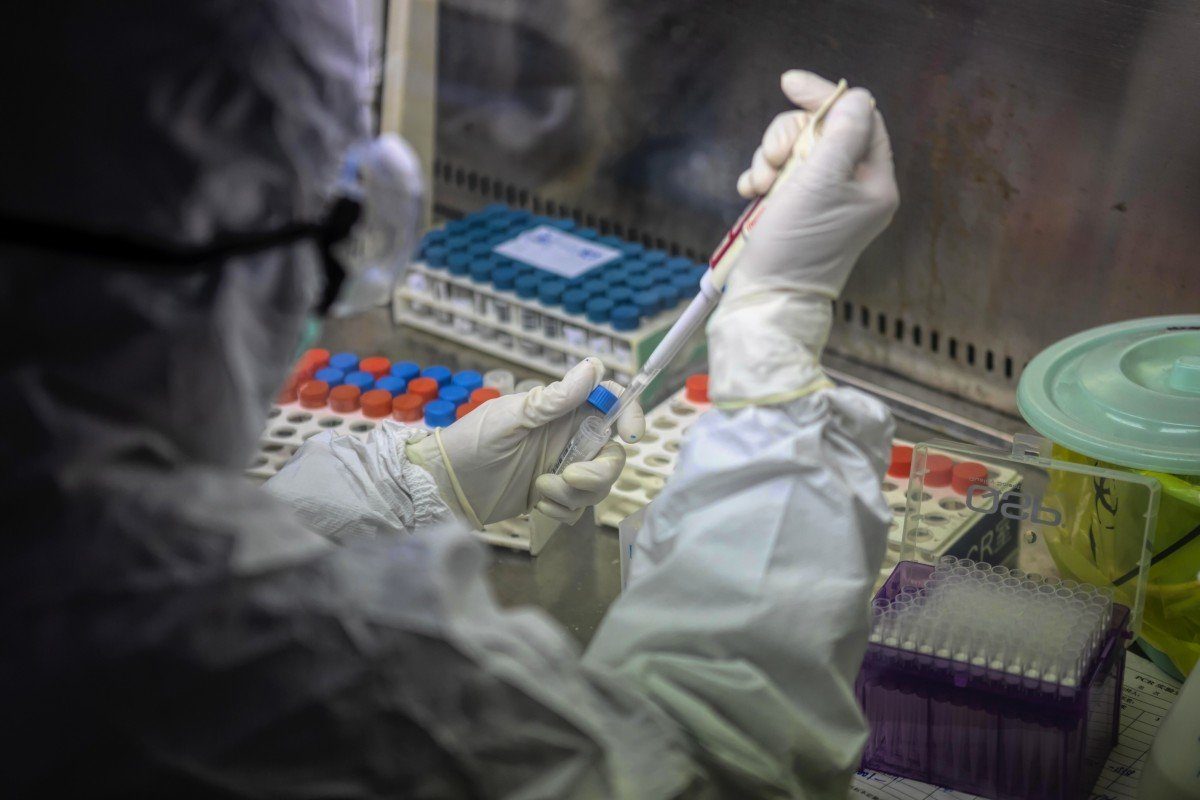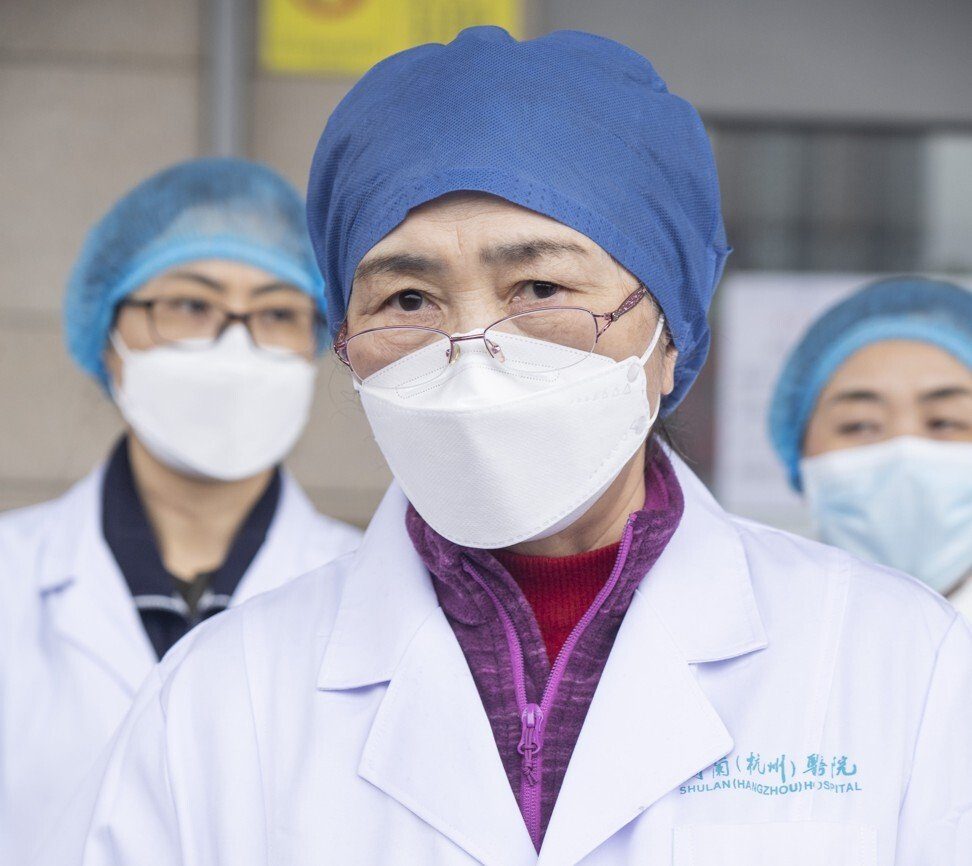
Professor Li Lanjuan og hendes kolleger fra Zhejiang University fandt mange mutationer, der ikke tidligere er rapporteret i en lille pulje af patienter. Disse mutationer omfattede ændringer, der var så sjældne, at forskere aldrig havde overvejet, at de kunne forekomme.
De bekræftede også for første gang med laboratoriebevis for, at visse mutationer kunne skabe stammer dødeligere end andre.
"Sars-CoV-2 har erhvervet mutationer, der er i stand til i væsentlig grad at ændre graden af den medfølgende sygdoms alvorlighed," skrev Li og hendes samarbejdspartnere i et ikke-peerreviewet papir, der blev udgivet på preprint-service medRxiv.org søndag.
Kommentar: Delvist oversat af Sott.net fra Coronavirus now has thousands of strains and mutations, some rare, some more pathogenic
Li's study provided the first hard evidence that mutation could affect how severely the virus caused disease or damage in its host.
Li took an unusual approach to investigate the virus mutation. She analysed the viral strains isolated from 11 randomly chosen Covid-19 patients from Hangzhou in the eastern province of Zhejiang, and then tested how efficiently they could infect and kill cells.
The deadliest mutations in the Zhejiang patients had also been found in most patients across Europe, while the milder strains were the predominant varieties found in parts of the United States, such as Washington state, according to their paper.
A separate study had found that New York strains had been imported from Europe. The death rate in New York was similar to that in many European countries, if not worse.
But the weaker mutation did not mean a lower risk for everybody, according to Li's study. In Zhejiang, two patients in their 30s and 50s who contracted the weaker strain became severely ill. Although both survived in the end, the elder patient needed treatment in an intensive care unit.
This finding could shed light on differences in regional mortality. The pandemic's infection and death rates vary from one country to another, and many explanations have been proposed.
Genetic scientists had noticed that the dominant strains in different geographic regions were inherently different. Some researchers suspected the varying mortality rates could, in part, be caused by mutations but they had no direct proof.
The issue was further complicated because survival rates depended on many factors, such as age, underlying health conditions or even blood type.
In hospitals, Covid-19 has been treated as one disease and patients have received the same treatment regardless of the strain they have. Li and her colleagues suggested that defining mutations in a region might determine actions to fight the virus.
"Drug and vaccine development, while urgent, need to take the impact of these accumulating mutations ... into account to avoid potential pitfalls," they said.
Li was the first scientist to propose the Wuhan lockdown, according to state media reports. The government followed her advice and in late January, the city of more than 11 million residents was shut down overnight.
The sample size in this most recent study was remarkably small. Other studies tracking the virus mutation usually involved hundreds, or even thousands, of strains.
Li's team detected more than 30 mutations. Among them 19 mutations - or about 60 per cent - were new.
They found some of these mutations could lead to functional changes in the virus' spike protein, a unique structure over the viral envelope enabling the coronavirus to bind with human cells. Computer simulation predicted that these mutations would increase its infectivity.
To verify the theory, Li and colleagues infected cells with strains carrying different mutations. The most aggressive strains could generate 270 times as much viral load as the weakest type. These strains also killed the cells the fastest.
It was an unexpected result from fewer than a dozen patients, "indicating that the true diversity of the viral strains is still largely underappreciated," Li wrote in the paper.
The mutations were genes different from the earliest strain isolated in Wuhan, where the virus was first detected in late December last year.
The coronavirus changes at an average speed of about one mutation per month. By Monday, more than 10,000 strains had been sequenced by scientists around the globe, containing more than 4,300 mutations, according to the China National Centre for Bioinformation.
Most of these samples, though, were sequenced by a standard approach that could generate a result quickly. The genes were read just once, for instance, and there was room for mistakes.
Li's team used a more sophisticated method known as ultra-deep sequencing. Each building block of the virus genome was read more than 100 times, allowing the researchers to see changes that could have been overlooked by the conventional approach.
The researchers also found three consecutive changes - known as tri-nucleotide mutations - in a 60-year-old patient, which was a rare event. Usually the genes mutated at one site at a time. This patient spent more than 50 days in hospital, much longer than other Covid-19 patients, and even his faeces were infectious with living viral strains.
"Investigating the functional impact of this tri-nucleotide mutation would be highly interesting," Li and colleagues said in the paper.
Professor Zhang Xuegong, head of the bioinformatics division at the National Laboratory for Information Science and Technology at Tsinghua University, said ultra-deep sequencing could be an effective strategy to track the virus' mutation.
"It can produce some useful information," he said.
But this approach could be much more time consuming and costly. It was unlikely to be applied to all samples.
"Our understanding of the virus remains quite shallow," Zhang said. Questions such as where the virus came from, why it could kill some healthy young people while generating no detectable symptoms in many others still left scientists scratching their heads.
"If there is a discovery that overturns the prevailing perception, don't be surprised."




Kommentar: More detail on the strains from meaww.com: Despite evidence to the contrary and even acknowledging that the exact origin is not yet possible to determine, the WHO is still pushing the animal to human transmission theory. Meanwhile Trump is looking into the possibility it originated from a lab, albeit in Wuhan and not the US: See also: